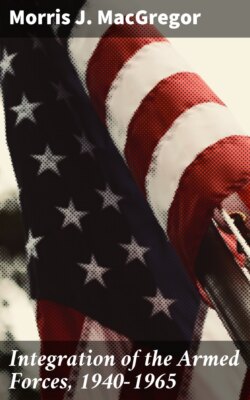Читать книгу Integration of the Armed Forces, 1940-1965 - Morris J. MacGregor - Страница 7
На сайте Литреса книга снята с продажи.
Introduction
ОглавлениеIn the quarter century that followed American entry into World War II, the nation's armed forces moved from the reluctant inclusion of a few segregated Negroes to their routine acceptance in a racially integrated military establishment. Nor was this change confined to military installations. By the time it was over, the armed forces had redefined their traditional obligation for the welfare of their members to include a promise of equal treatment for black servicemen wherever they might be. In the name of equality of treatment and opportunity, the Department of Defense began to challenge racial injustices deeply rooted in American society.
For all its sweeping implications, equality in the armed forces obviously had its pragmatic aspects. In one sense it was a practical answer to pressing political problems that had plagued several national administrations. In another, it was the services' expression of those liberalizing tendencies that were permeating American society during the era of civil rights activism. But to a considerable extent the policy of racial equality that evolved in this quarter century was also a response to the need for military efficiency. So easy did it become to demonstrate the connection between inefficiency and discrimination that, even when other reasons existed, military efficiency was the one most often evoked by defense officials to justify a change in racial policy.
